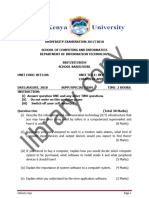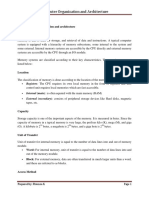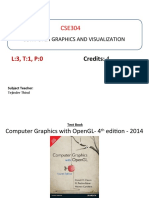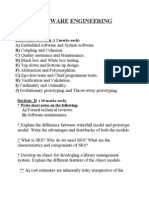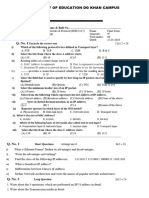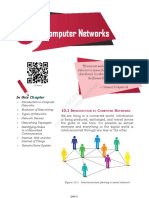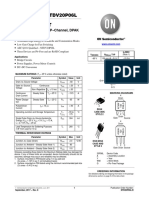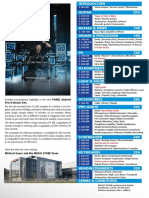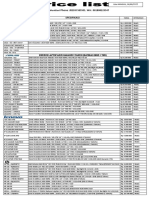h apter
C
10 Computer Networks
“Hoaxes use weaknesses in human
behavior to ensure they are replicated and
distributed. In other words, hoaxes prey on
the Human Operating System.”
— Stewart Kirkpatrick
In this Chapter
»» Introduction to Computer
Networks
»» Evolution of Networking 10.1 Introduction to Computer Networks
»» Types of Networks
We are living in a connected world. Information
»» Network Devices is being produced, exchanged, and traced across
»» Networking Topologies the globe in real time. It's possible as almost
»» Identifying Nodes everyone and everything in the digital world is
in a Networked interconnected through one way or the other.
Communication
»» Internet, Web and the
Internet of Things
»» Domain Name System
Figure 10.1: Interconnection forming a social network
2024-25
Chpater-10.indd 181 11-09-2020 16:41:16
Activity 10.1 A group of two or more similar things or people
Identify some other interconnected with each other is called network (Figure
networks in the 10.1). Some of the examples of network in our everyday
real world. life includes:
• Social network
• Mobile network
• Network of computers
• Airlines, railway, banks, hospitals networks
A computer network (Figure 10.2) is an interconnection
among two or more computers or computing devices.
Such interconnection allows computers to share data
and resources among each other. A basic network may
connect a few computers placed in a room.
The network size may vary from small to large
depending on the number of computers it connects.
A computer network can include different types of
hosts (also called nodes) like server, desktop, laptop,
cellular phones.
Networking
Device
Figure 10.2: A computer network
Apart from computers, networks include networking
devices like switch, router, modem, etc. Networking
devices are used to connect multiple computers in
different settings. For communication, data in a network
is divided into smaller chunks called packets. These
packets are then carried over a network. Devices in a
network can be connected either through wired media
like cables or wireless media like air.
In a communication network, each device that is a
part of a network and that can receive, create, store
or send data to different network routes is called a
node. In the context of data communication, a node
can be a device such as a modem, hub, bridge, switch,
router, digital telephone handset, a printer, a computer
or a server.
182 Computer Science - Class XII
2024-25
Chpater-10.indd 182 11-09-2020 16:41:17
Interconnectivity of computing devices in a network Activity 10.2
allows us to exchange information simultaneously with Create a hotspot using
many parties through email, websites, audio/video a smartphone and
calls, etc. Network allows sharing of resources. For connect other
example, a printer can be made available to multiple devices to it.
computers through a network; a networked storage
can be accessed by multiple computers. People often
connect their devices through hotspot, thus forming a
small personal network.
10.2 Evolution of Networking
In the 1960s a research project was commissioned by
Advanced Research Projects Agency Network (ARPANET)
in the U.S. Department of Defence to connect the
academic and research institutions located at different
places for scientific collaborations. The first message was
communicated between the University of California, Los
Angeles (UCLA) and Stanford Research Institute (SRI).
Slowly but gradually, more and more organisations
joined the ARPANET, and many independent smaller
networks were formed. Few of the milestones in the
magnificent journey of evolution of computer networks
is depicted in the timeline shown in Figure 10.3.
The idea of Advanced First version of Wi-fi
Research Project Agency TCP/IP introduced as (802.11) standard was
Network (ARPANET) is standard protocol on introduced
conceptualized ARPANET National Science
Roy Tomlinson develops Foundation brings
network messaging or connectivity to more
E-mail. Symbol @ people with its NSFNET
comes to mean "at" program
1961 1997
1982
1971 1986
1969 1983
1990
1974 Domain Name System
ARPANET became introduced
functional by
connecting UCLA and
SRI
The term Internet was The Berners-Lee at
coined, CERN developed HTML
and URL, thus giving
First commercial use of birth to World Wide Web
ARPANET, was started (www)
in the name of Telenet
Figure 10.3: Timeline showing evolution of networking
Computer Networks 183
2024-25
Chpater-10.indd 183 11-09-2020 16:41:17














